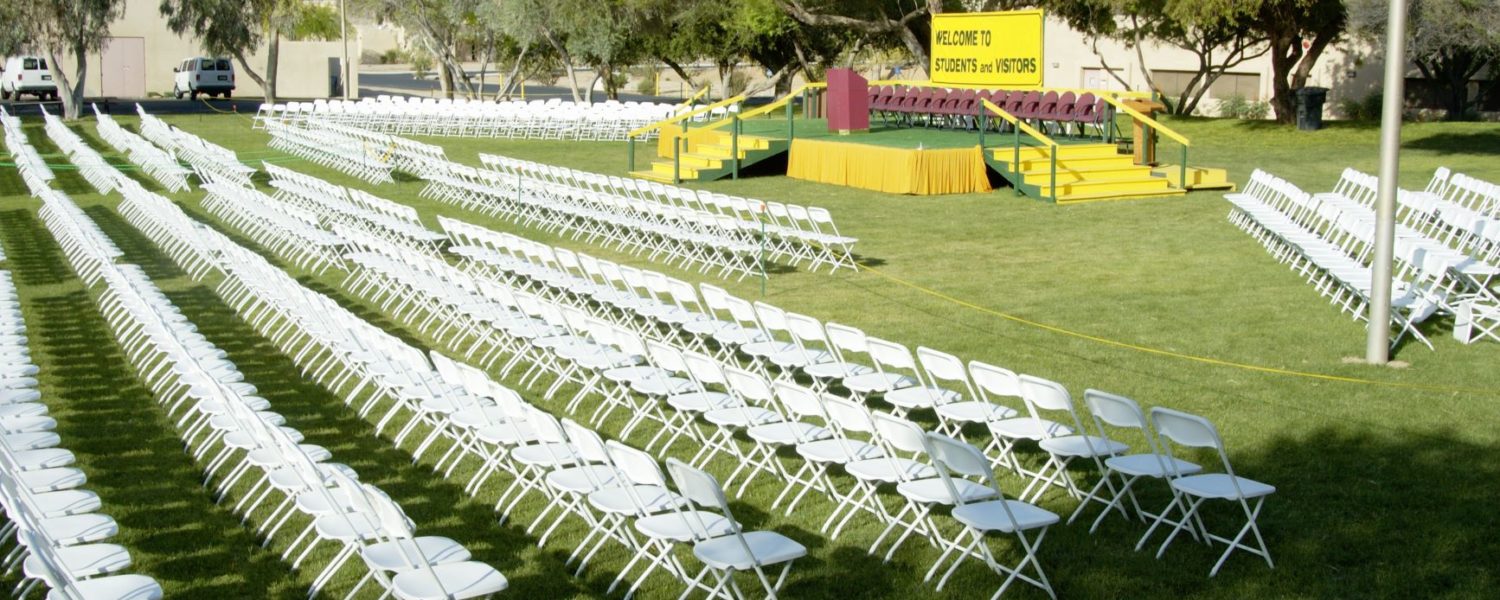By Mark Newton and Magdalena Werneke
Not all portable stages are created equal, so you should do your due diligence before you purchase to help make sure you buy a stage that best fits your application and budget.
Here are some helpful hints to help make your stage search easier.
What Brand of Stage Should I Purchase?
You are almost always going to get your best value and level of service buying directly from a U.S.-based staging manufacturer. They have a complete understanding and detailed knowledge of their products and are better able to assist you when you need it most.
There are also many resellers of portable staging, but they typically offer an imported stage that will not offer you the same quality and support that a U.S. manufacturer can.
You should always look at buying a portable stage as a long-term investment. When choosing your stage based solely on the lowest price, be aware that it may cost you more in the long run with less than optimal performance, service, and support.
Reputable manufacturers of staging and staging products are more likely to stand behind their products and do whatever it takes to make the situation right.
Surfaces
The most common stage surfaces are polyvinyl, weather-resistant polyvinyl, carpet, natural wood, and Plexiglas.
You should always select a surface that best fits your needs and application, and you should research and consider all options when getting a price quote.
If you are using your stage outdoors, for example, you want to consider a weather-resistant stage even it costs a little more.
Size
Although portable stage decks come in many sizes, 4’ x 4’ and 4’ x 8’ decks are the most common.
By designing your stage so that the depth is a multiple of 4 and the width is a multiple of 8, you’re able to create your platform using the fewest number of stage decks.
You will get the best value with 4’ x 8’ decks, followed by the 4’ x 4’ decks.
Some manufacturers will also offer other standard sizes plus custom sizes, allowing you to design a custom stage. As with everything else, custom dimensions usually equate to higher cost.
Structure
The design of the stage is very important when it comes to safety, stability, usability, and quality. The weight of each stage section is also an important factor in the true portability of the stage.
Most staging is made from aluminum or steel. Aluminum-framed stages will always be lighter, making them easier to set up and take down. The 4’ x 8’ stage decks in the 107 to 120 pound range are considered very manageable.
Another weight-related topic is called “Allowable Live Load.” This is the amount of weight per square foot, when spread out evenly, that the stage can support.
While a load capacity of 125 PSF may be the minimum allowed, 175 to 200 PSF is considered much more desirable, for obvious reasons.
Reputable staging manufacturers will voluntarily disclose the load capacities and specifications of their staging.
Once you have selected a stage, you then need to select the legs to support it. Although stages with folding legs may seem to be the best choice, they are heavier and do not allow you to change stage heights or have adjustable feet.
Stage decks that use removable aluminum legs are typically lighter, more stable and offer you the ability to change the height of your stage at anytime just by buying new legs, which are very affordable. They also come standard with an adjustable screw foot for fine leveling, which you probably need.
Setup
Setup time for a well-designed stage depending on overall size can be set up in 30 minutes or less little or no instructions.
Stage decks that offer “Coffin Locks” for connecting decks to each other make setup quicker, lock tighter and use no parts or pins that are easily lost or broken. The only tool required is a T-Handle for turning the locks.
You also want to consider a stage that comes standard with Velcro already installed in the frame to quickly attach stage skirting so no clips are required.
Many staging manufacturers have created short instructional videos for product assembly and installation of their staging and staging accessories. Make sure that you ask questions about the setup and takedown procedure of the stage and accessories before you purchase.
Conclusion
There are many factors involved with choosing the proper stage for your application.
Portable stage decks can be used for bands, preaching, drum, keyboard, guitar, choral and seating risers plus camera platforms. Ultimately, you must determine which features are most important to you and best fit your needs.
Performing due diligence and properly researching your stage before you purchase will help to ensure that you find a safe, stable, easy-to-use and high-quality stage that will serve your needs for years to come.
We advise you to reach out to several staging companies that you are considering purchasing a staging system from and discuss all your options. In addition, get a detailed price quote in writing with shipping costs.
Mark Newton and Magdalena Werneke are employed by Quik Stage, a manufacturer of high-quality portable staging and portable staging accessories located in Minneapolis, Minnesota, www.quikstage.com.





